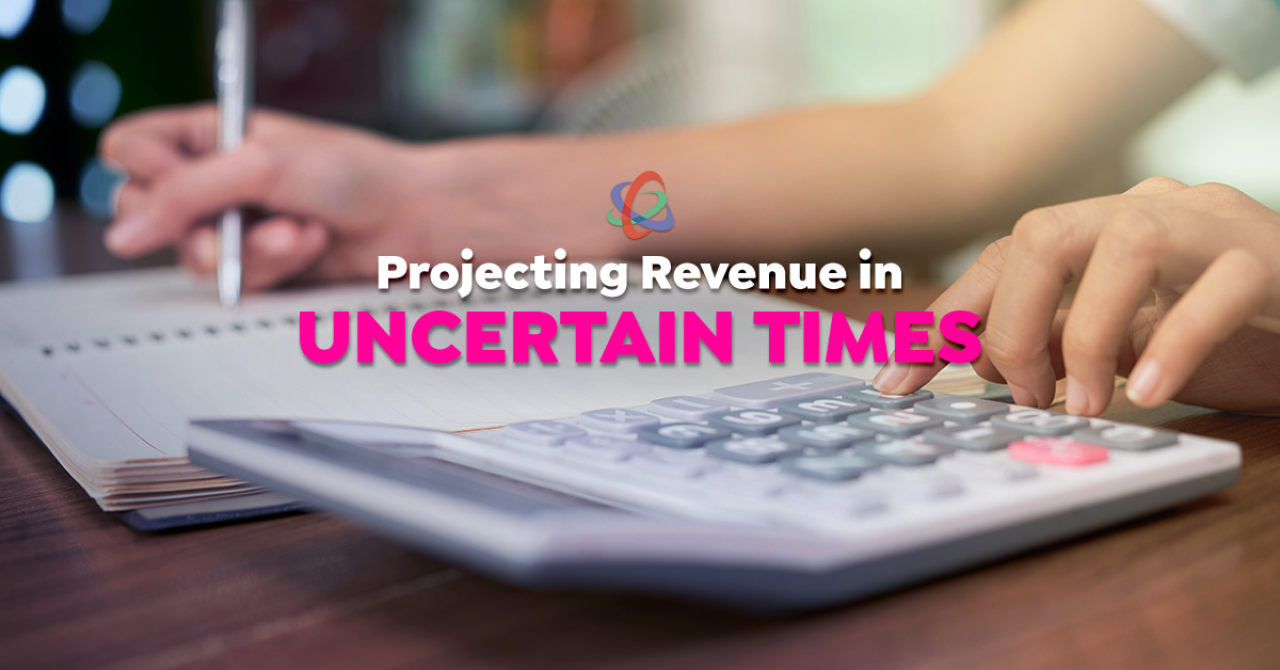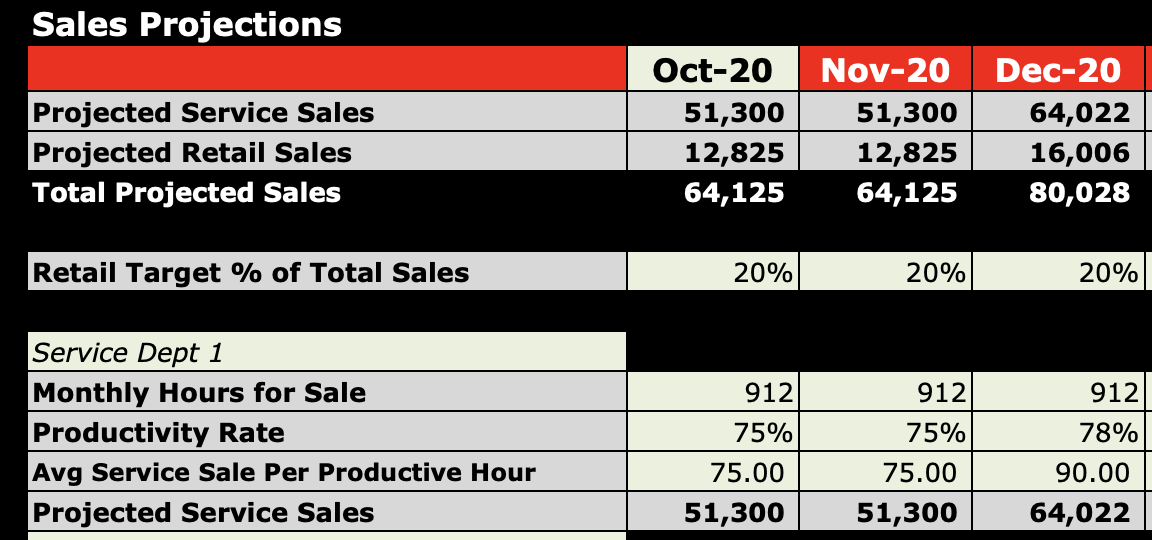Projecting Salon/Spa Revenue in Uncertain Times

Few argue the importance of projecting revenue. The problem is, it just doesn’t get done.
As a salon/spa coaching company, here’s what we see:
- Even in good times, most salon/spa owners don’t take the time to project revenue. The same goes for budgeting expenses.
- Many owners “feel” they have a handle on their financial reality because they can look at the appointment book and bank balances. But that’s far from projecting and budgeting.
- Now that we’re in the last quarter of an extremely rattled 2020 economy, for many owners, projecting revenue is seen as a pointless guessing game.
FACT #1: Any owner that doesn’t have monthly revenue projections and expense budgets, no matter how much he or she “feels” they have a handle on it, is flying financially blind.
FACT #2: When times are good, it’s easy to ignore the need to do revenue projections. In the uncertain economic times we’re in today, projecting revenue is an absolute must.
In bad economic times, cash flow means security and life.
Here’s why projecting revenue is so important during this economic crisis:
- Without monthly revenue targets, there’s nothing specific to aim at. It’s the classic “you can’t hit a target if you can’t see it.”
- To harness the energy of the team, there needs to be a way to keep score. Without a company revenue target that everyone strives to achieve, the energy of the team is squandered.
- Setting individual goals for service providers falls far short of unifying employees and creating a shared sense of urgency.
There are three rules you must follow when projecting revenue in the uncertain times we’re in.
- Make your best guess: If you nail it — you’re brilliant. In these times, if you miss your revenue target by 5% — you’re still pretty brilliant. Miss by 10% — you tried and will adjust accordingly. Get comfortable with the concept that projecting revenue is simply a best guess.
- It’s OK to fine-tune your projections: In good times, you may only need to fine-tune your revenue projections a few times a year. In these times, you may need to fine-tune your revenue projections as situations dictate. If that means monthly until a stable pattern returns, that’s fine. Resist the temptation to change revenue projections for the current month unless absolutely necessary. Read #3.
- You can’t hit 100% of your revenue projections with 75% or 80% effort: If your salon/spa keeps coming up short of goal, it’s usually not the goal that’s wrong — it’s the level of effort, discipline, focus and teamwork that’s coming up short. If you want to win, you have to play to win.
So how the heck does a salon/spa owner project revenue when productivity rates are all over the place, clients are stretching out appointments and last-minute cancellations can wreck what looked like a busy day?
There are four key variables to making your best revenue projections:
- Service hours available for sale each month: This means hours available for sale on your appointment book. It is the sum total number of all the hours each service provider is scheduled to work in a month. It is not the total of how many hours the salon/spa is open times the number of stations and/or treatment rooms.
- If a positive Covid-19 test causes an employee to self-quarantine, or your business to close until all test negative, simply adjust your hours for sale that month.
- Projected productivity rate: Your projected productivity rate is the percentage of all the hours you have available for sale for the month that you expect to sell.
- The projected productivity rate you use is your best guess at how efficiently you expect to sell your hours available for sale. Example: If your company normally runs at a 72% productivity rate, consider bumping your projected productivity rate to 75%. NOTE: The higher your prebook rate today, the better your productivity rate will be in a month or two.
- If your productivity rate is consistently running below 70%, you have too many hours for sale. This could be due to poor prebook and/or client retention. If not, it may be necessary to reduce hours either with schedule reduction or employee reduction. Allowing a low productivity rate to go unaddressed is culturally and financially damaging.
- Projected revenue per hour: This is the average amount of revenue one hour of service can generate. To determine your projected revenue per hour, divide your average monthly service sales by the average number of hours sold in a month.
- Retail sales percent of total revenue: We understand that many owners project retail as a percentage of service sales, but that doesn’t indicate retail’s true contribution to total revenue. At Strategies, we teach and coach owners how to project retail sales as it would appear on a Profit & Loss Statement. Simply put, service sales + retail sales = Total Revenue.
- The calculation is simple: If you want to project retail sales to be 20% of your total revenue, simply divide projected service sales by 80%. Example: If you’re projecting service sales for one month to be $51,300, and you want retail to be 20% of total revenue, divide $51,300 by 80% (.80) for total revenue of $64,125. This will give you projected retail sales of $12,825, or 20% of total revenue.
Here’s what the complete calculation looks like for service and retail sales for one month:
Hours for sale x Productivity rate x Revenue per hour = Projected service sales ÷ Projected Retail % of Total Revenue.
 In the chart above, you can see an example of service and retail projections for October, November and December 2020.
In the chart above, you can see an example of service and retail projections for October, November and December 2020. - Projected hours for sale are 912 for October, November and December.
- Projected productivity rate is 75% for October and November. It’s increased to 78% for December.
- Revenue per hour is $75 for October and November. It’s bumped to $90 for December.
IMPORTANT: These are examples only and do not reflect or suggest industry averages. You need to determine your own numbers. It’s not hard.
Here’s my challenge to you: Yes, the pandemic has made projecting service and retail sales more of a guesswork exercise.
The pandemic doesn’t mean it’s impossible to make a best guess on what your salon/spa can do in service retail sales.
The numbers and calculations described above are not complicated in any way.
If you want help building your projections for the remainder of 2020 and into 2021, our one-month Profit Projector coaching plan can teach you how.
Comments
No comments found. Start the conversation!
Leave a Comment